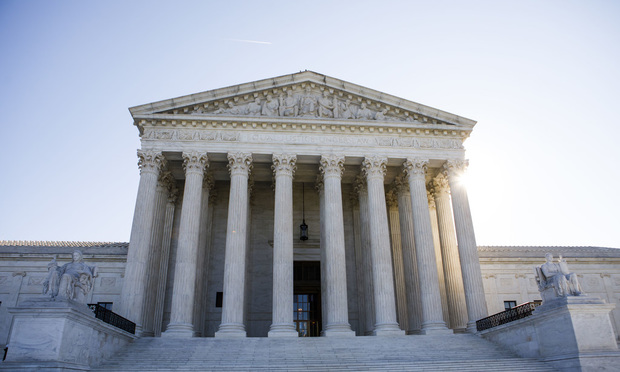 it is a safe bet that the Trump administration will attempt to redeploy this rule, or that Congress may pass legislation giving HHS the proper authority to regulate price transparency. (Photo: Shutterstock)
it is a safe bet that the Trump administration will attempt to redeploy this rule, or that Congress may pass legislation giving HHS the proper authority to regulate price transparency. (Photo: Shutterstock)
Hours before it was scheduled to take effect on July 9th, a federal judge in Washington, D.C. blocked a controversial final rule which would have regulated the marketing of prescription drugs. U.S. District Judge Amit Mehta ruled, to the dismay of many cost-containment advocates, that the Department of Health and Human Services (HHS) lacked the regulatory authority to force drug manufacturers to include the cost of drugs in television commercials. She noted, “[t]hat policy very well could be an effective tool in halting the rising cost of prescription drugs. But no matter how vexing the problem of spiraling drug costs may be, HHS cannot do more than what Congress has authorized.”
This decision is just one in a line of many recent court rulings in which judges have found that the Trump administration exceeded its authority, specifically its regulatory authority, when promulgating rules. For cost-containment advocates (among others), it is important to understand why the courts are rebuking the administration's attempts to implement regulations related to price and transparency. In most cases, including in this one, the courts are relying on one of the most important and controversial doctrines in administrative law: Chevron deference.
Related: White House falters on drug price reforms; time for Congress to step in?
In the case of Chevron, U.S.A., Inc. v. Natural Resources Defense Council, Inc., 467 U.S. 837 (1984), the Supreme Court stated that unless Congress has directly spoken to the precise issue in question, courts should defer to agencies on questions of statutory interpretation as long as the agency arrived at a reasonable or permissible construction of the applicable statute.
Chevron analysis applies to agency decisions on statutory construction arrived at in the course of rulemaking and adjudication. Courts only apply Chevron deference when an agency has received congressional authority to determine the particular matter at issue. In recent cases involving the proposed expansion of association health plans and contraceptive coverage, courts have found that agencies within the federal government exceeded the regulatory authority afforded to them by Congress.
Here, the federal court in Washington, D.C., considered whether HHS was within its right to issue a final rule compelling the disclosure of drug list prices to the public. Lawyers for the government contended that the Social Security Act (SSA) gave HHS the legal authority to issue this rule. Nothing in the SSA expressly grants HHS the right to compel drug companies to disclose the wholesale price of a marketing drug in television advertisements. Therefore, the court examined whether the SSA implicitly delegated this authority to HHS. To do this, the court reviewed the text, legislative history, structure, and purpose of the SSA. Having done that, the court finally concluded that the disclosure rule exceeded the rulemaking authority that Congress granted to HHS under the SSA.
Where do we go from here?
First, it is likely that the administration will appeal this decision to a higher court. From a legal perspective, then, from here we likely go to the next court. What can we expect in the meantime, though, from the industry, or from the administration?
Given that health care, and prescription drug prices especially, have topped polls of what likely 2020 voters are concerned about most, it is a safe bet that the Trump administration will attempt to redeploy this rule in some other way, or even that Congress may pass legislation giving HHS or some other federal agency the proper authority to regulate price transparency. After all, it is much easier (politically speaking) to advocate for transparency than it is to advocate for price regulation. Indeed, in a series of hearings on Capitol Hill earlier this spring in which both parties lashed out at drug manufacturers and pharmacy benefit managers, calls for price regulation engendered the most pushback from politicians.
Transparency, on the other hand, is and has been the buzzword in Washington, D.C. Recall that in June, President Trump signed an executive order on “Improving Price and Quality Transparency in American Healthcare to Put Patients First.” This order was focused mostly on hospital pricing, but the administration is applying the same rationale in its quest to regulate to drug manufacturers.
For their part, most drug companies opposed this specific rule and oppose price transparency requirements in general. They argue that seeing list prices in television advertisements could cause confusion for patient and as a result, those patients will not seek necessary medical care. While this argument may have some merit, it seems unlikely that it will be enough to persuade lawmakers to abandon price disclosure requirements. Obscenely high prices are primarily dissuading patients from seeking care, and if there is a chance that shaming manufacturers might work to lower prices, politicians and industry advocates seem willing to try.
Additionally, arguments presented by drug companies in opposition to this rule were undermined when Johnson & Johnson, one of the largest drug makers in the country, decided to become the first company to start giving the list price of its prescription drugs in television advertisements (before this rule even took effect). After all, if one health care giant believed it could disclose prices without confusing patients, why couldn't others? In fact, the administration had hoped some drug companies would do this in a show of good faith, which would pressure other drug companies to follow their lead. With the final rule now blocked, it remains unclear if Johnson & Johnson will continue this practice.
Aside from the administration's efforts, Congress has also taken center stage in addressing the issue of skyrocketing drug costs. In the Senate, lawmakers are working on their own proposals, including one called the Lower Health Care Costs Act. This bill would require healthcare providers and insurance companies to disclose pricing to patient ahead of time, before they receive treatment. In the House of Representatives, Representative Elijah Cummings (D-MD), Chairman of the House Committee on Oversight and Reform, is seriously exploring the possibility of stripping patent licenses from manufacturers who, in Congress's opinion, are price gouging the public.
Drug prices are not likely to drop any time soon, and according to the Organization for Economic Co-operation and Development, the U.S. ranks number one for money spent per capita on prescription drugs: roughly $1,208 per person. Most of America and most politicians agree on the problem, and over time, the force of politics will force drug companies to either address exorbitant costs or face government regulation.
Brady Bizarro, Esq., is director of legal compliance and regulatory affairs at The Phia Group.
Read more:
© 2025 ALM Global, LLC, All Rights Reserved. Request academic re-use from www.copyright.com. All other uses, submit a request to [email protected]. For more information visit Asset & Logo Licensing.







